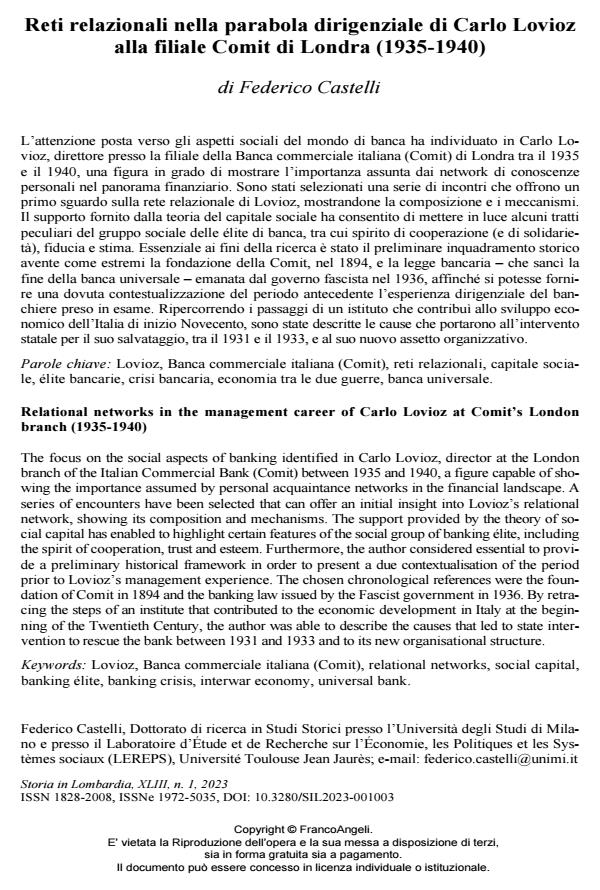Relational networks in the management career of Carlo Lovioz at Comit’s London branch (1935-1940)
Journal title STORIA IN LOMBARDIA
Author/s Federico Castelli
Publishing Year 2023 Issue 2023/1
Language Italian Pages 26 P. 44-69 File size 169 KB
DOI 10.3280/SIL2023-001003
DOI is like a bar code for intellectual property: to have more infomation
click here
Below, you can see the article first page
If you want to buy this article in PDF format, you can do it, following the instructions to buy download credits

FrancoAngeli is member of Publishers International Linking Association, Inc (PILA), a not-for-profit association which run the CrossRef service enabling links to and from online scholarly content.
The focus on the social aspects of banking identified in Carlo Lovioz, director at the London branch of the Italian Commercial Bank (Comit) between 1935 and 1940, a figure capable of sho- wing the importance assumed by personal acquaintance networks in the financial landscape. A series of encounters have been selected that can offer an initial insight into Lovioz’s relational network, showing its composition and mechanisms. The support provided by the theory of so- cial capital has enabled to highlight certain features of the social group of banking élite, including the spirit of cooperation, trust and esteem. Furthermore, the author considered essential to provi- de a preliminary historical framework in order to present a due contextualisation of the period prior to Lovioz’s management experience. The chosen chronological references were the foun- dation of Comit in 1894 and the banking law issued by the Fascist government in 1936. By retra- cing the steps of an institute that contributed to the economic development in Italy at the begin- ning of the Twentieth Century, the author was able to describe the causes that led to state inter- vention to rescue the bank between 1931 and 1933 and to its new organisational structure.
Keywords: Lovioz, Banca commerciale italiana (Comit), relational networks, social capital, banking élite, banking crisis, interwar economy, universal bank.
Federico Castelli, Reti relazionali nella parabola dirigenziale di Carlo Lovioz alla filiale Comit di Londra (1935-1940) in "STORIA IN LOMBARDIA" 1/2023, pp 44-69, DOI: 10.3280/SIL2023-001003